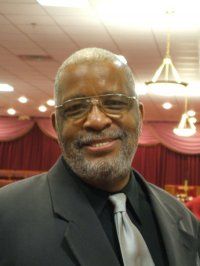George Stevens has lived and worked on Lancaster Avenue his entire life. For almost 40 years, he witnessed the decline of one of Philadelphia’s main arteries as urban blight drained the corridor of commercial activity and economic prosperity.
Stevens, who for over a quarter-century ran a printing company on the street, founded the Lancaster Avenue 21st Century Business Association three years ago to help continue, and enhance, the economic reemergence of Lancaster Avenue between 34th and 44th streets in West Philadelphia.
“Lancaster Avenue 21st Century came out of the need to have another association that represented Lancaster Avenue,” said Stevens, who also serves as president of organization. “There are other associations that do a lot of good things, but [Lancaster Avenue] is a large territory, and we felt that there was room for another organization to better represent the interests of businesses along this corridor.”
Stevens said his association, a 501 C6 non-profit, works to help market new businesses along the avenue, coordinate grants for new ventures from Drexel University and other public and private organizations, and assist the development of vacant properties along Lancaster Avenue.
Stevens’ efforts already have had a tangible impact: Since 2009, a wide variety of businesses like clothing boutiques, cafes and art galleries have opened along the 10-block stretch of Lancaster Avenue with the assistance of the non-profit.
“[Stevens] and his organization have been wonderful for our business,” Kat Reed, co-owner of Reed’s Coffee and Tea House located at 38th and Lancaster Ave. “[LA 21st Century] has helped get our café get started by helping get costumers and clientele through the door through marketing our name in community newspapers and bulletins, and through providing us with business advice and assistance with applying for business grants.”
Opening its doors in late 2011, Reed’s Café exemplifies the transformation taking place along Lancaster Avenue, especially on the western half of the corridor, where the economic impact of Drexel University’s student body begins to wane. Indeed, Stevens says that pushing economic prosperity westward along Lancaster Avenues is both his highest priority and biggest challenge.

Credit: Geroge Stevens LA21
“We’ve done a pretty good job turning the eastern half of our territory around during the last few years,” Stevens said, adding “we still have a number of challenges on the blocks past 38th and Lancaster.”
According to Stevens, one of the biggest impediments blocking the expansion of economic activity westward is the gluttony of abandoned or vacant commercial properties with delinquent or nonexistent owners.
One solution put forth by the city of Philadelphia is a land bank system. Introduced by city council members Maria Quiñones Sánchez and Bill Green in 2011, the Philadelphia Land Bank proposes a way to address the nearly 40,000 abandoned properties around the city. Still in early planning stages, a land bank would put properties that have been abandoned for a number of years up for auction, seeking an owner that comes up with the best plan for each building.
This type of system already exists in 75 municipalities nationwide, including Cleveland and Atlanta, and Stevens believes that it could be a viable solution to resolving problems facing Lancaster Avenue and the surrounding community.
While LA 21st Century has a comprehensive strategy for helping businesses along Lancaster Avenue grow, Stevens says that the key to making it work is building a strong community. Each month, LA 21st Century and its partner organization, the People’s Emergency Center, organize Second Fridays intended to showcase the many art galleries and artist studios located along Lancaster Avenue.
Stevens sees the arts as a catalyst for strengthening both the bonds of the community and for bringing in people from outside the neighborhood. However, the emphasis on community is most evident in the way that Stevens works to connect with business owners along Lancaster Avenue.
“We’re trying to make people in this community realize that we’re all in it together,” Stevens said. “If we can bridge these gaps and get people to work together and invest in the neighborhood, we can accomplish our goal and make Lancaster Avenue and the surrounding communities stronger than they ever were before.”
















